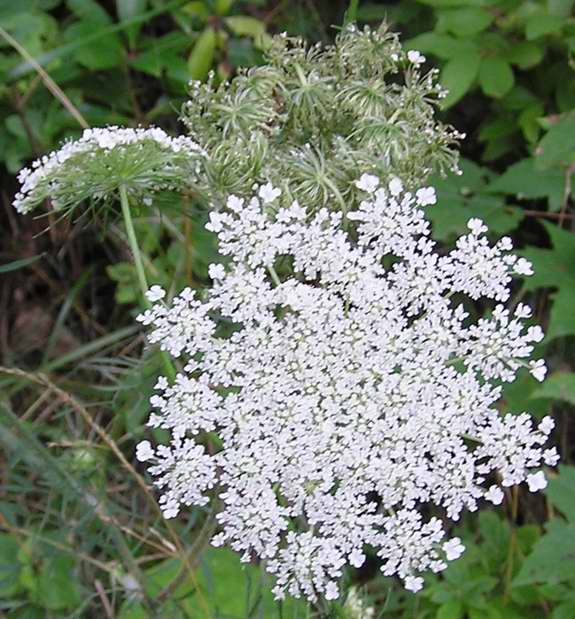|
Common Name: Queen Anne's Lace, Wild Carrot, Birds' Nest Scientific Name: Daucus carota (from daukos which is what the Greeks called plants of the umbrel family, deriving from daio, to overheat; carota is Latin for carrot) Potpourri: Queen Anne's Lace is also known as wild carrot because that is what it is, according to a preponderance of references. Webster's dictionary defines "carrot" as "an inedible biennial plant (Daucus carota) of the umbel family, with fernlike leaves and compound umbels of white flowers, usually with one red flower in the center." The edible orange root we call carrot is a cultivar of D. carota known as variation sativa. The etymology of Queen Anne's Lace has not been definitively established, though a number of plausible sources compete for credibility. The most well known is that Queen Anne of England (1702-1714) pricked her finger while making lace and stained the lace with blood, this being the origin of the red to purple dot in the center of the many white florets. Another legend has it that it is named for Saint Anne, the mother of the Virgin Mary and the patron saint of lace makers. A more mundane and probable theory is that the flower reminded the British of Queen Anne's headdress, as she favored lace. The seeds of Queen Anne's lace have been used as a contraceptive by women for centuries. Recent research with mice has confirmed that the volatile oils of the seeds block the formation of progesterone, essential for the uterine wall to receive the egg. |
